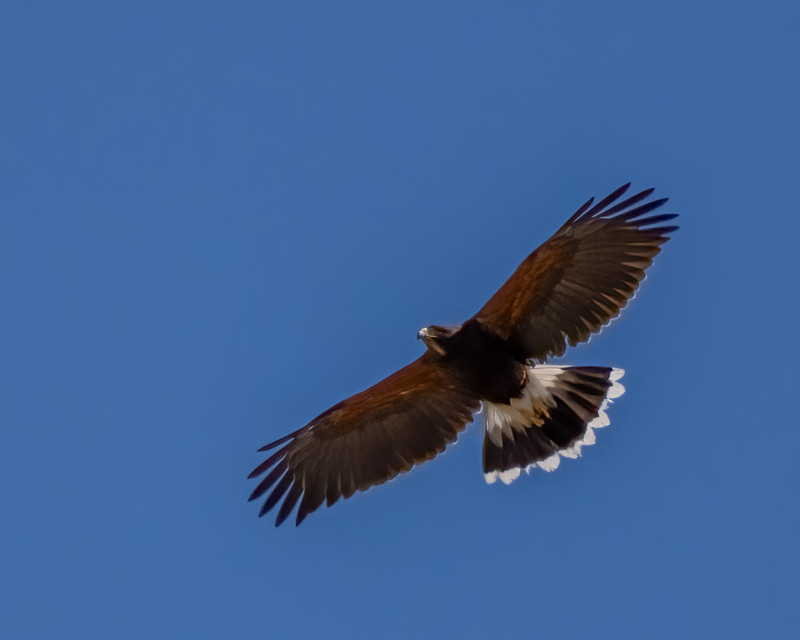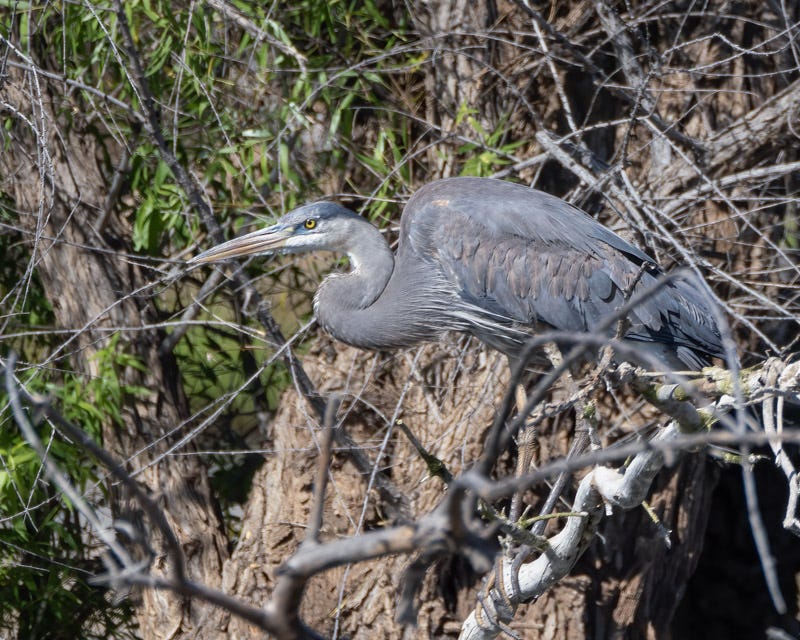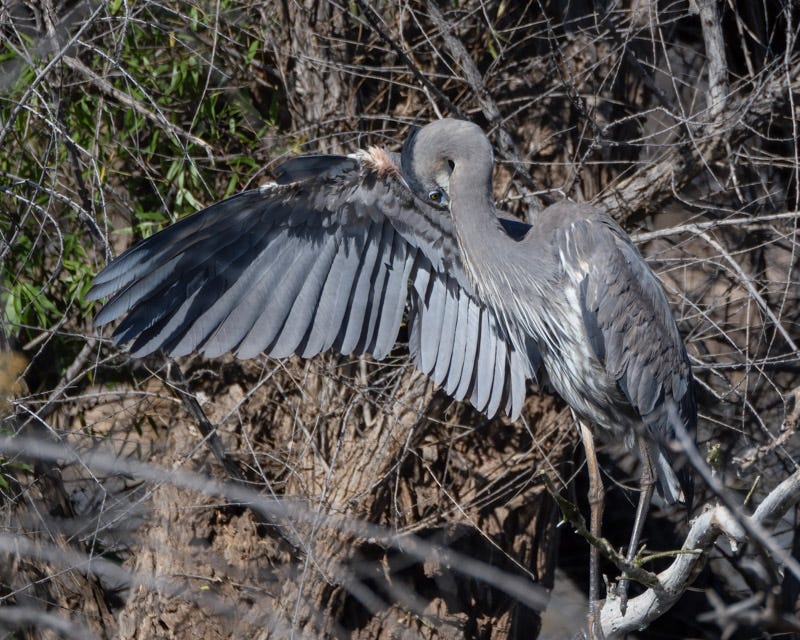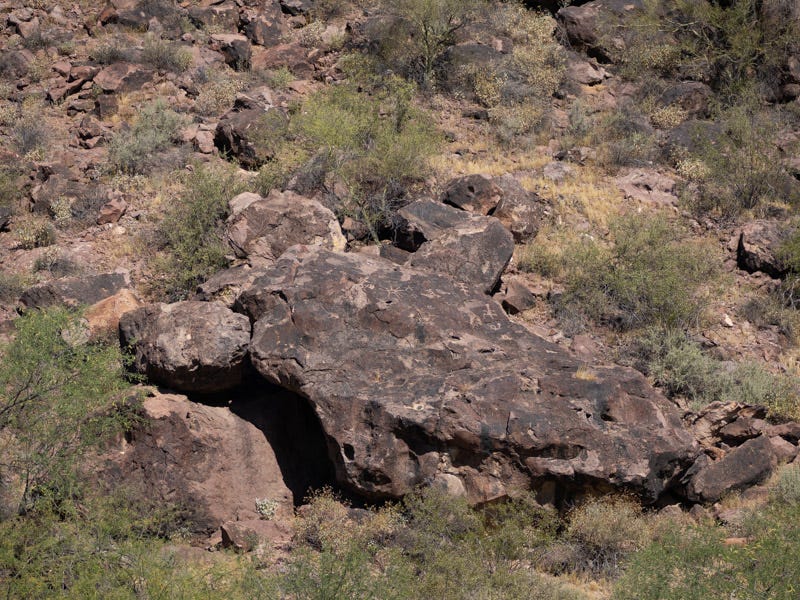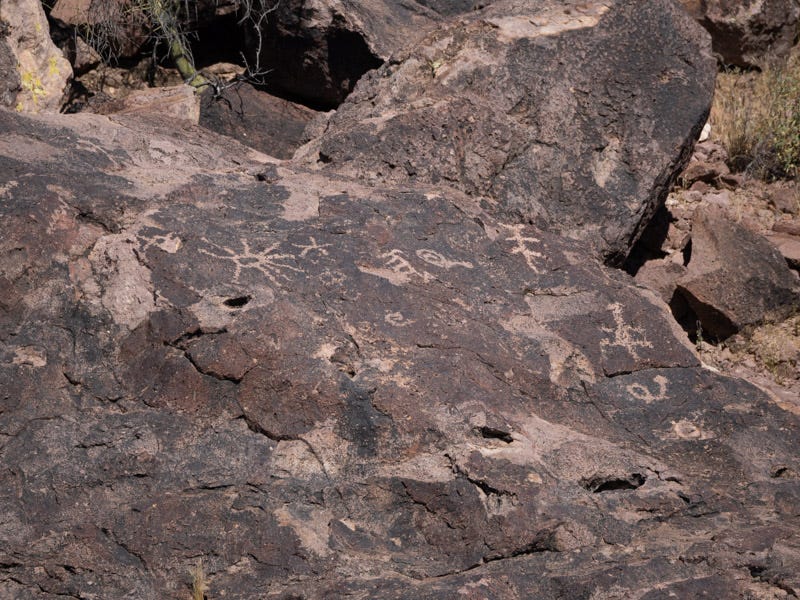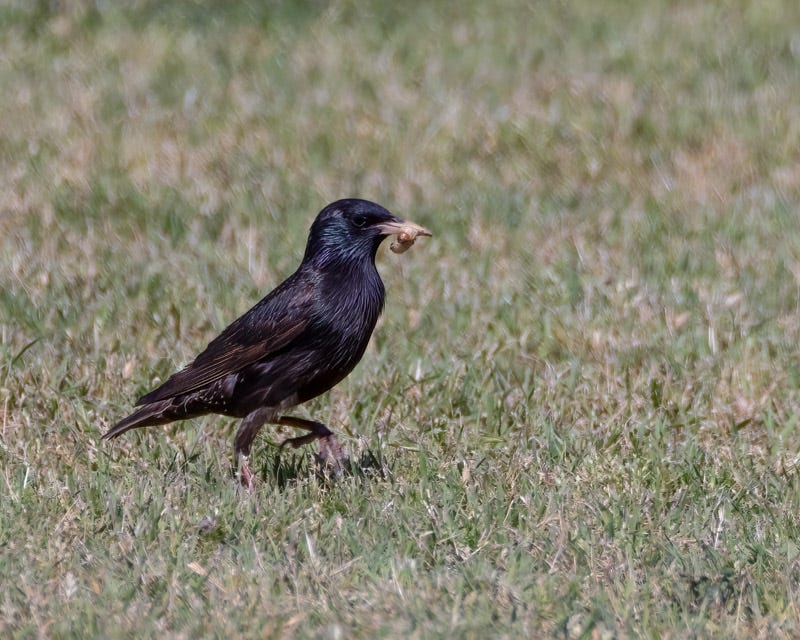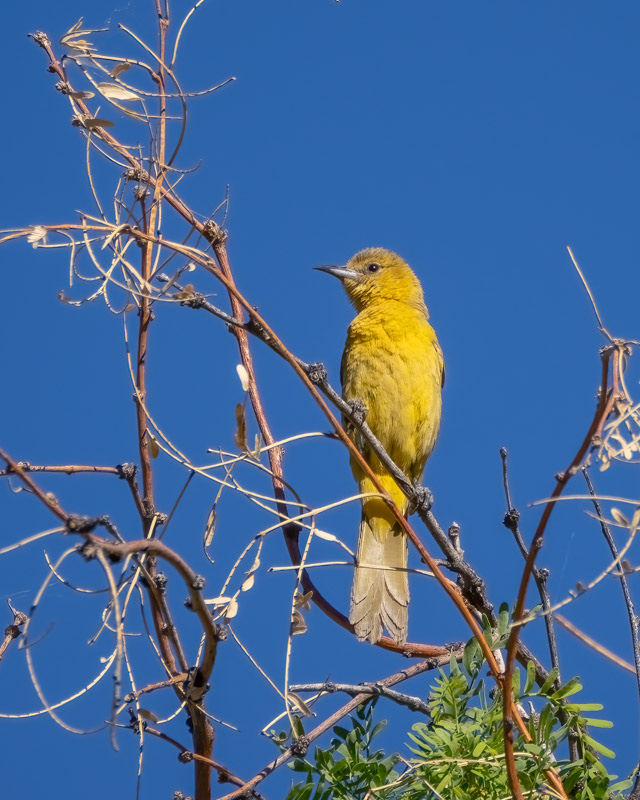Pictures from a Few Different Recent Outings
Here are some photos that have been 'collecting dust' on my computer desktop for a while. I think you may enjoy them. I was driving north past the Catalina State Park when I spotted a Harris's Hawk soaring overhead. I had to pull over to get a shot of it.
Tucson Audubon leads some walks at the El Rio Preserve and I joined them on May 1. A Killdeer welcomed us with some big flyovers. Killdeer are one of the bird species that "says its name" while it is in flight. Does it sound that way to you? https://www.birdnote.org/listen/shows/killdeer-master-distraction
The impetus to 'create' the El Rio Preserve happened in 2014 when flooding from the Santa Cruz River breached the berms protecting the old Coachline Gravel Pit, creating a huge lake. A full history of this Marana site can be found in this 2020 article: https://www.sonorandesert.org/2020/07/24/updates-from-the-el-rio-riparian-preserve/ Thanks to the permanent water, birds like the Spotted Sandpiper can now be found there.
In addition, we saw another larger sandpiper, the Solitary Sandpiper. For more on the current status of the Marana park at El Rio, see https://www.maranaaz.gov/elrio
And of course, if there is water, there is a good chance to find a large heron of some kind or other. This Great Blue Heron was sunning in a tangle of branches on an island.
It spent some time preening. I love how its neck is so long and flexible that the Great Blue can reach behind it to scratch and preen.
The area has a long history of human use and was occupied from about 850-1300. The Los Morteros Conservation site is well worth the visit (once the weather cools down) https://www.discovermarana.org/directory/los-morteros/ Although I didn't visit Los Morteros that morning, at a northern end of El Rio I could see what is referred to as "Turtle Rock". Can you see the large turtle?
A closer look reveals a large number of petroglyphs carved into the rock face.
Moving from the Santa Cruz River next to El Rio Preserve, on May 11 I went on a walk at Rio Vista Park, along the Rillito River at Tucson Blvd. A Lucy's Warbler sang from the top of a tree. Lucy's Warblers migrate north to Tucson during breeding season and can be found among the mesquite bosques throughout our area.
This Lark Sparrow was hunting seeds in the shade of a mesquite tree. Bitdnote says that the Lark Sparrow is "not just another little brown bird." https://www.birdnote.org/listen/shows/lark-sparrow
This European Starling found a juicy treat on the grass at Rio Vista. It didn't eat it but, after strutting around, flew off with it. It was likely heading towards a nest to provide food for its young.
Black-tailed Gnatcatchers are tiny songbirds, weighing about as much as a nickel. Living in the southwestern deserts, they flit around looking for insects to grab. Males sport a black cap in the summer. You can listen to their scolding call at the bottom of this Audubon page: https://tinyurl.com/3rrwm9e7
In Montosa Canyon on the east side of the Santa Rita Mountains, I saw a pair of Hooded Orioles. These birds travel north to southern Arizona to breed in the summers and can be found nesting under fan palm leaves in urban areas of the city. They are also found throughout desert riparian areas and canyons. This female came to the top of the trees but the male remained more hidden.
There are a lot of birds out there in all sorts of places.


